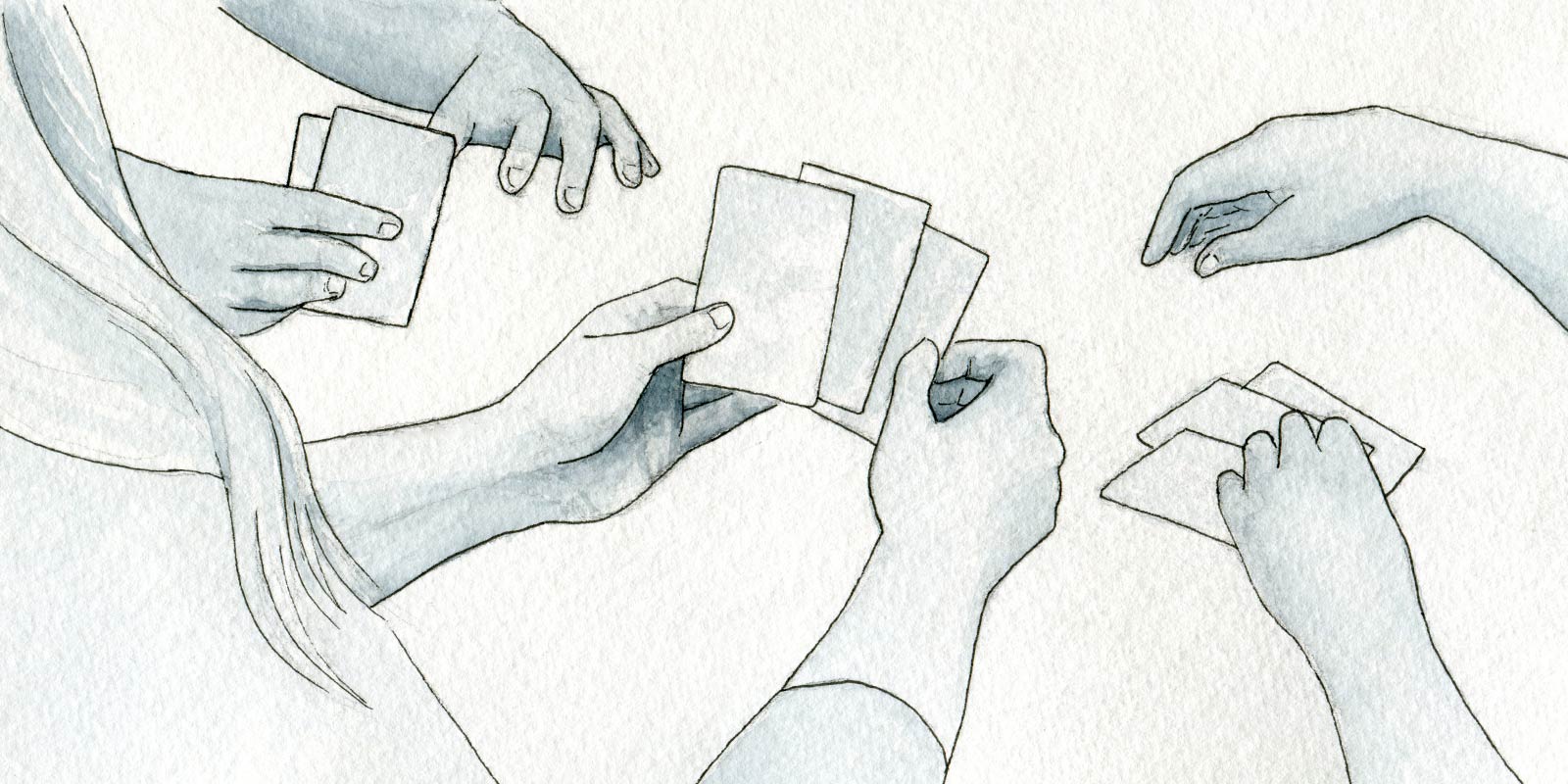Games can amuse, surprise, and energize us. They can stand alongside any other medium of entertainment or art in their ability to tell compelling stories, create rich experiences, and trigger reflection and contemplation…with one intruiging difference: you cannot help but be an active participant. When you play a game, your choices and actions shapes its outcome. Go beyond the skill, strategy, and chance, and you can use that kind of feedback to shape your thinking.
These are a few games I’ve come across that pose challenges that require a kind of problem-solving that correlates, in some small measure, to the types of problem-solving I do every day.
What if..?
Thinking about what drives people – what they hope for, what they fear – is useful for anticipating how and why they might interact with your product. Sometimes all it takes is the proper mix of motivation and opportunity to create greatness…or chaos.
A great game for imagining possible scenarios is Fiasco. It’s a storytelling game for 3-5 players that describes itself as “a game of powerful ambition and poor impulse control.” Each player uses a bit of choice and a bit of chance to create their characters with their own concerns and relationships to each other.
Once the characters are established, the players create the story together. Each player uses dice to determine the general outcome for their character in a particular scene: will it end well, or end badly? The players then decide why that happens, and how. The game unravels like a Coen brothers movie, and some of the best parts are the discussions about the range of actions a particular character might take.
Exactly what I was thinking
Understanding your users’ point of view means knowing what associations they make with words or images. You probably know your friends and family best, but even then their thought process may surprise you.
Two games that play upon perceptions of words or phrases are Apples to Apples, and its rather NSFW sibling, Cards Against Humanity. Each player, as it is their turn, announces an adjective (or question) and the other players submit cards that they have that they think would be the best answers for it. The winning answer is determined by the current player, so part of the strategy is understanding the humor or reasoning of that person.
There is a similar game called Dixit that answers the phrase or question with an image instead. Dixit uses dream-like imagery that invites multiple meanings. And, like the others, success depends on understanding the player. The types of prompts also shape the responses in interesting ways: Apples to Apples can either be obvious or clever, Cards Against Humanity is perennially tasteless, and Dixit is introspective. For all three, while there may be many good answers for any particular round, the winning one will be the one that best matches that particular person’s point of view.
The simplest possible explanation
You may have a lot of knowledge of your users, but can you describe your product and who is it specifically for in a sentence? One way to hone your thinking is to use a familiar structure to describe it.
One format I’ve seen used for user research are Mad Libs, a game invented by a pair of television writers in the 1950’s. Mad Libs ask for a series of words up front based on parts of speech: a noun, an adjective, and so on. It’s only later that you learn exactly how they fit into a story, usually in a surreal and bizarre way. Part of the humor is the absurdity, but that basic notion of filling-in-the-blank with a particular type of input can work for product definition too. Instead of a noun or an adjective, the input could be a user type or a goal.
My colleagues at Adobe applied this to product definition for Creative Suite features to ensure that each project centered around a simple, meaningful story. Since these projects came from multiple teams, this structure was quite useful in creating consistent and understandable descriptions. This structure is also promoted in Lean UX, which uses it as a way to define a feature: “We believe that building <this feature> for <these people> will result in <this outcome>. We will know that we are successful when we see <this signal from the market>.”
Games can help you hone your perceptions. Some, like Jane McGonigal, even envision that this ability to shape perception can be used to help make the world a better place. While we may be far from downloading skills or experience straight to your brain, the right kind of games can help you learn, empathize, and structure your thinking. Play on!


Leave a Reply